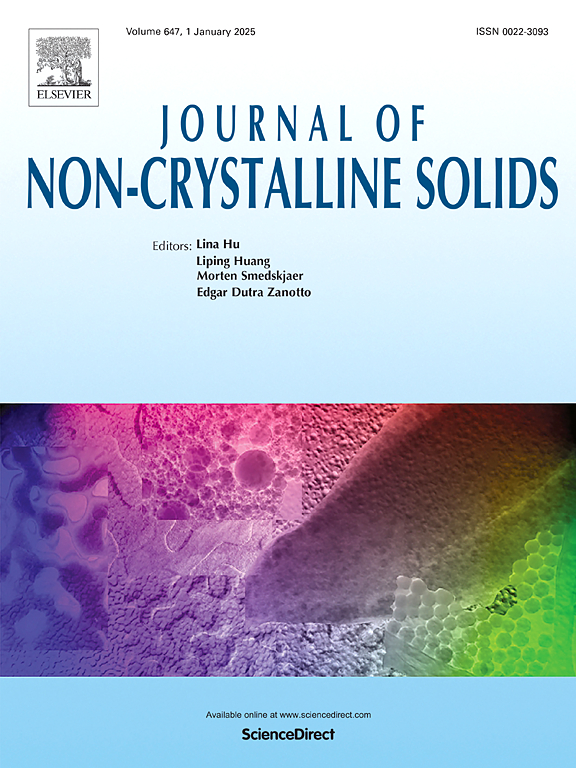硅和其他污染物对光伏玻璃回收中熔融过程的影响
IF 3.5
3区 材料科学
Q1 MATERIALS SCIENCE, CERAMICS
引用次数: 0
摘要
光伏(PV)发电的全球增长导致面板处理的预期增加,玻璃占面板重量的76%,成为回收工作的重点。然而,玻璃熔融回收的可行性仍不清楚。当从光伏电池板回收的玻璃被电池中的硅污染时,假设硅可能会在玻璃熔化过程中减少玻璃成分的氧化物。本研究研究了光伏面板玻璃与拆卸过程中产生的污染物之间的反应,特别是光伏玻璃中的氧化锑和玻璃熔融回收过程中的Si污染物。对光伏面板部件中含有试剂的光伏玻璃进行高温处理,并对所得样品进行x射线衍射分析。此外,通过化学热力学计算研究了玻璃组分氧化物与这些元素之间的氧化还原反应。结果表明,Cu使玻璃呈蓝色,Si和Al使玻璃呈灰色。添加0.1%质量%的Si使玻璃变黄,这是由于硫氧化物的减少。随着硅的加入,氧化锑被还原,过量的硅被保留。在熔融过程中存在硅诱导缺陷,突出了在回收PV玻璃时防止硅污染的关键需要。这些发现为优化PV玻璃回收方法以制造各种回收产品提供了有价值的见解。本文章由计算机程序翻译,如有差异,请以英文原文为准。
Impact of silicon and other contaminants on the melting process in photovoltaic glass recycling
The global growth of photovoltaic (PV) power generation has led to an anticipated increase in the disposal of panels, with glass, which accounts for 76 % of panel weight, becoming a key focus for recycling efforts. However, the feasibility of glass melting recycling remains unclear. When recovered glass from PV panels is contaminated with silicon from the cells, it is hypothesized that Si may reduce glass component oxides during the glass melting process. This study investigates the reaction between PV panel glass and contaminants generated during its disassembly, especially antimony oxide in PV glass and Si contaminants during the glass melting recycling process. PV glass containing reagent that found in PV panel parts was subjected to high-temperature treatment, and the resulting samples were analyzed using X-ray diffraction. Additionally, redox reactions between glass-component oxides and these elements were investigated through chemical thermodynamics calculations. The results indicated that Cu turned the glass blue, and Si and Al turned it gray. An addition of 0.1 mass% Si turned the glass yellow, which is attributed to the reduction of sulfur oxide. With more Si added, antimony oxide was reduced and excess Si remained. The presence of Si induced defects during the melting process, highlighting the critical need to prevent Si contamination when recycling PV glass. These findings offer valuable insights into optimizing PV glass recovery methods for manufacturing various recycled products.
求助全文
通过发布文献求助,成功后即可免费获取论文全文。
去求助
来源期刊

Journal of Non-crystalline Solids
工程技术-材料科学:硅酸盐
CiteScore
6.50
自引率
11.40%
发文量
576
审稿时长
35 days
期刊介绍:
The Journal of Non-Crystalline Solids publishes review articles, research papers, and Letters to the Editor on amorphous and glassy materials, including inorganic, organic, polymeric, hybrid and metallic systems. Papers on partially glassy materials, such as glass-ceramics and glass-matrix composites, and papers involving the liquid state are also included in so far as the properties of the liquid are relevant for the formation of the solid.
In all cases the papers must demonstrate both novelty and importance to the field, by way of significant advances in understanding or application of non-crystalline solids; in the case of Letters, a compelling case must also be made for expedited handling.
 求助内容:
求助内容: 应助结果提醒方式:
应助结果提醒方式:


